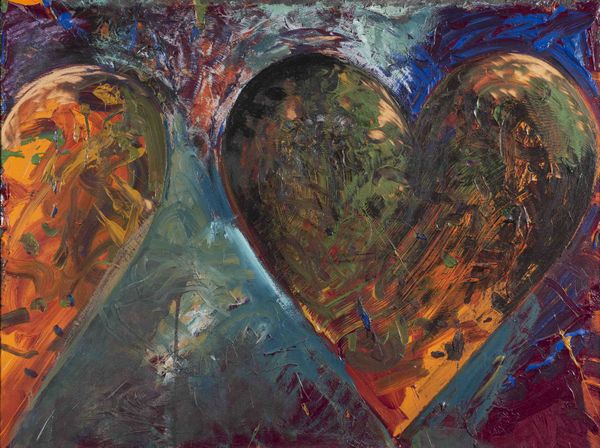Jim Dine
(American, b.1937)
Though he never considered himself to be a part of the Pop Art movement, American artist Jim Dine has often exhibited among some of the greatest Pop artists of the 21st century including Andy Warhol and Roy Lichtenstein. His use of brilliant, saturated colours and harsh black outlines to depict hearts, tools, cartoon characters and other symbols of personal significance recall Warhol's multi-coloured silkscreen prints of celebrities. Dine is also occasionally considered to have been a part of the Neo-Dada movement because of his use of collage and assemblage.
Born on the 16th of June 1935, Dine received his BFA from the University of Ohio in 1957. Following his graduation, he moved to New York where he first earned the respect of the art world with his Happenings. The result of a collaboration with artists Claes Oldenburg and Allan Kaprow, in conjunction with musician John Cage, the Happenings were chaotic performances that provided a stark contrast with the sombre mood of the expressionists popular in the New York art world at the time.
In 1962 Dine's work was included in the historically significant and ground-breaking New Painting of Common Objects exhibition curated by Walter Hopps at the Norton Simon Museum alongside Wayne Thiebaud and Ed Ruscha. This exhibition is considered one of the first Pop Art exhibitions in America. These painters started a movement during a time of social unrest that shocked America and the art world. The Pop Art movement fundamentally altered the nature of modern art.
In the early 1960s, Dine began attaching objects like paint cans, paint brushes, screwdrivers, and other tools of autobiographical significance, to his canvases. These provided commercial as well as critical success, but left Dine unsatisfied. In September 1966, the police raided an exhibition of his work displayed at Robert Fraser Gallery in London. Twenty of his works were seized. Under the Obscene Publications Act of 1959, Dine's work was found to be indecent, but not obscene, and Fraser was fined 20 guineas. The following year Dine moved to London and continued to be represented by Fraser, spending the next four years developing his art there.
Returning to the United States in 1971, he focused on several series of drawings. From 1976, Dine was represented by The Pace Gallery. In the 1980s, sculpture resumed a prominent place in his art. Since then there has been an apparent shift in the subject of his art from man-made objects to nature.
Dine's work is part of numerous public collections including the British Museum, the Centre Georges Pompidou, the Hirshhorn Museum and Sculpture Garden in Washington D.C., the Metropolitan Museum of Art NY, the Museum of Modern Art NY, the San Francisco Museum of Modern Art, Tate Modern.

